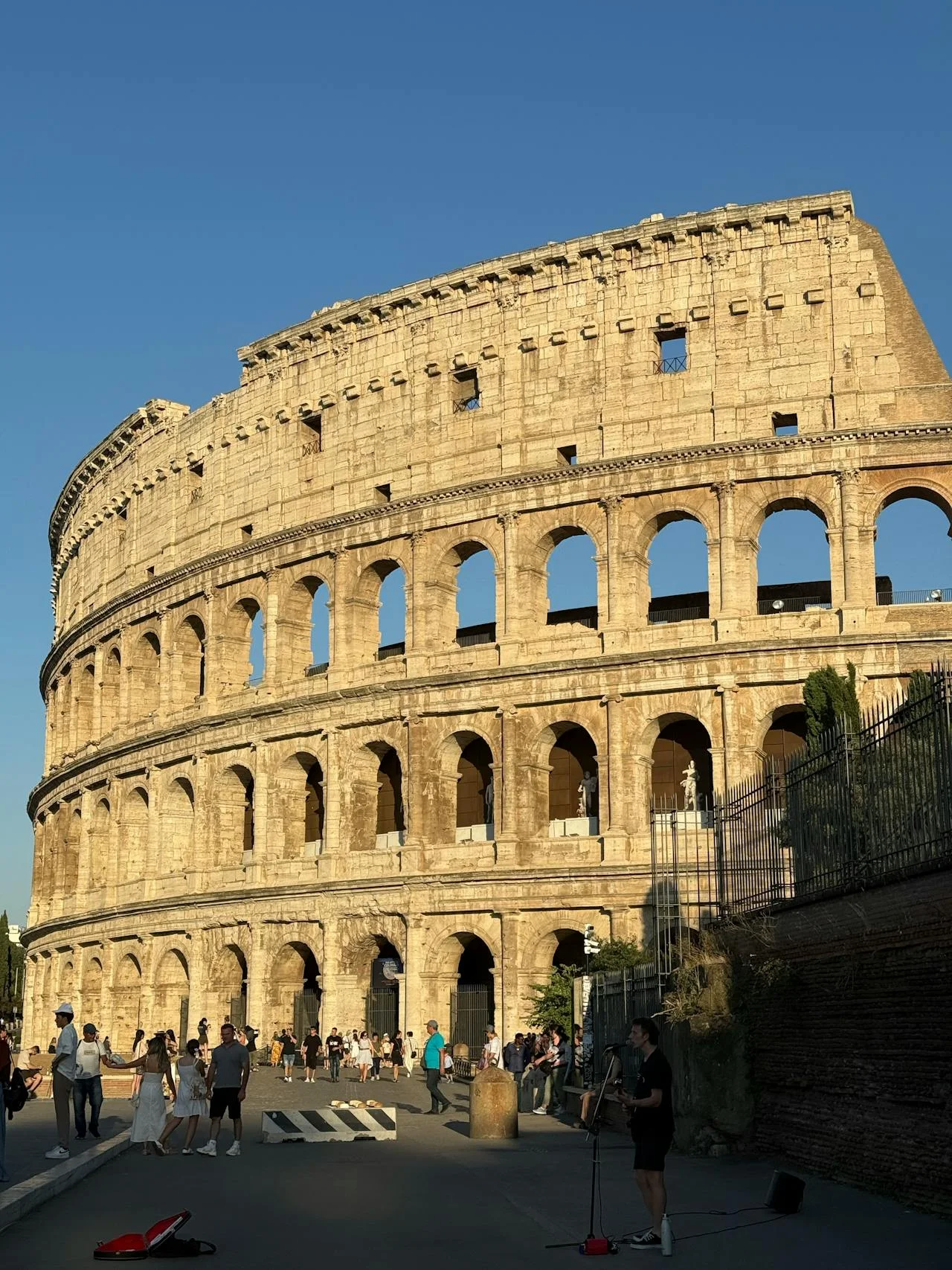Rome Travel Guide — Ancient Wonders, Food & Itinerary
Travel Researcher & Writer
- Introduction to Rome
- Why Visit Rome?
- Best Time to Visit Rome
- Top 12 Attractions You Can’t Miss
- Where to Stay — Neighborhood Guide
- 4-Day Rome Itinerary
- Where & What to Eat
- Transportation Tips
- Money & Safety
- Smart Travel Hacks
- Day Trips from Rome
- Conclusion
- Related Blogs: Explore More Destinations and guides
- FAQ

Rome isn’t just a destination — it’s an open-air museum. The Eternal City continues to blend history and modern life like nowhere else. From walking in the footsteps of emperors at the Colosseum to savoring a late-night gelato along the Tiber River, Rome rewards every traveler with timeless magic. This guide explores when to visit, what to see, where to stay, and insider booking strategies that let you experience luxury for less.
Why Visit Rome?
Rome remains one of Europe’s top 5 destinations for good reason — its monuments are iconic, but the city is also evolving. Recent museum restorations, new Michelin Guide entrants, and sustainability-focused tours make 2025-2026 an exciting time to visit. Whether you’re exploring the Vatican’s art treasures or indulging in carbonara at a hidden trattoria, Rome continues to redefine cultural travel.
Best Time to Visit Rome
The best time to visit Rome is April–June and September–October. During these months, weather averages 18–26°C with mild evenings, and crowds are manageable. Summer (July–August) brings high heat and peak pricing, while winter offers lower hotel rates and fewer queues.
Booking Windows & Price Hacks
- Book international flights 60–90 days in advance for the best pricing.
- Use tools like Expedia’s “Price Tracker” or Kiwi Flights to monitor multi-city fare drops.
- Secure Vatican & Colosseum tickets 4–6 weeks before your trip to guarantee entry.
Top 12 Attractions You Can’t Miss
- The Colosseum: The heart of Imperial Rome — pre-book timed entry and consider the underground tour.
- Roman Forum: Walk the same paths as Caesar and Augustus — best seen with a guided tour.
- Vatican Museums: Home to the Sistine Chapel and Raphael Rooms. Early-entry tours are worth the splurge.
- St. Peter’s Basilica: Climb the dome for sweeping Vatican views.
- Pantheon: The best-preserved Roman temple, now a functioning church.
- Trevi Fountain: Toss a coin (right hand over left shoulder) to ensure a return to Rome.
- Spanish Steps: Perfect at golden hour.
- Piazza Navona: Baroque fountains and street performers make this a favorite evening stop.
- Trastevere: Charming streets, small trattorias, and nightlife.
- Castel Sant’Angelo: Roman fortress turned museum with incredible river views.
- Borghese Gallery: Reserve ahead for Bernini’s marble masterpieces.
- Campo de’ Fiori: Daily market and great aperitivo options.
Where to Stay — Neighborhood Guide
- Centro Storico: Heart of the old city, walking distance to major landmarks.
- Trastevere: Romantic and bohemian; perfect for food lovers.
- Monti: Trendy boutiques, central, youthful vibe.
- Prati: Near the Vatican — elegant and quieter.
- Aventine Hill: Peaceful, upscale, panoramic views.
Luxury hotels: Hotel de Russie, Hassler Roma,
Portrait Roma.
Mid-range & boutique: The Fifteen Keys, Nerva
Boutique Hotel.
Budget: Hotel Santa Maria (Trastevere) or guesthouses
in Monti.
Rome 4-Day Itinerary
Day 1 — Ancient Rome
- Colosseum, Roman Forum & Palatine Hill (morning)
- Lunch near Monti neighborhood
- Afternoon stroll via Imperial Forums
- Evening: Aperitivo at Piazza Venezia
Day 2 — Vatican City
- Early Vatican Museums & Sistine Chapel
- St. Peter’s Basilica dome climb
- Lunch in Prati
- Dinner at Taverna Trilussa (Trastevere)
Day 3 — Baroque Rome
- Pantheon, Trevi Fountain, Spanish Steps
- Borghese Gardens & Gallery in the afternoon
- Evening gelato at Giolitti
Day 4 — Local Life & Markets
- Campo de’ Fiori morning market
- Trastevere walking tour
- Optional: Day trip to Tivoli (Villa d’Este)
Where & What to Eat
Rome’s food scene thrives on tradition. Look for cacio e pepe, carbonara, and amatriciana. Dine at family-run trattorias in Testaccio or Trastevere for authenticity.
- Fine dining: La Pergola, Aroma, Il Pagliaccio.
- Local gems: Da Enzo al 29, Roscioli, Pizzeria Emma.
- Street eats: Supplì (fried risotto balls), gelato from Fatamorgana.
Transport Tips
- Metro: Efficient for main sights, but buses reach more areas.
- Taxi & Apps: FreeNow and Uber operate, though taxis are often cheaper.
- Airport Transfers: Express trains (32 min) from FCO to Termini, or private airport taxis (€45 fixed rate).
Money & Safety
ATMs are common, but avoid high-fee machines near tourist zones. Use cards for most payments. Pickpocketing is the main risk — keep phones and wallets secure, especially near the metro.
Smart Travel Hacks
- Use Google Maps offline for walking routes.
- Visit major sites early or late to avoid lines and heat.
- Ask hotels about partner restaurants for discounts.
- Sign up for airline and hotel loyalty programs before booking.
Day Trips from Rome
- Tivoli: Visit Villa d’Este and Hadrian’s Villa.
- Pompeii & Naples: Possible via high-speed train (1h10m to Naples).
- Orvieto: Hilltop Umbrian town ideal for a quiet day escape.
Conclusion
Rome is a timeless destination where history meets everyday life. Whether you’re chasing ancient ruins, culinary excellence, or hidden piazzas, 2025 offers more ways than ever to enjoy it smartly. Book early, walk often, and savor each espresso — la dolce vita awaits.
Rome Travel FAQ
April to June or September to October offer ideal weather.
Four days gives enough time for key attractions and some leisure.
Yes — limited entry times fill quickly. Early-morning or skip-the-line tours are worth it.
Absolutely. Exercise standard precautions against pickpocketing in crowded areas.
Technically yes, but you’ll rush both. Split them across two days if possible.
Service is often included. Locals round up or leave 5–10% for excellent service.
Yes, tap water is drinkable; metro and buses are safe and clean.
